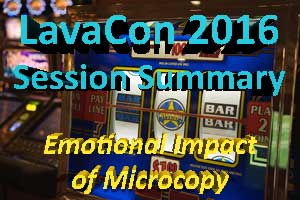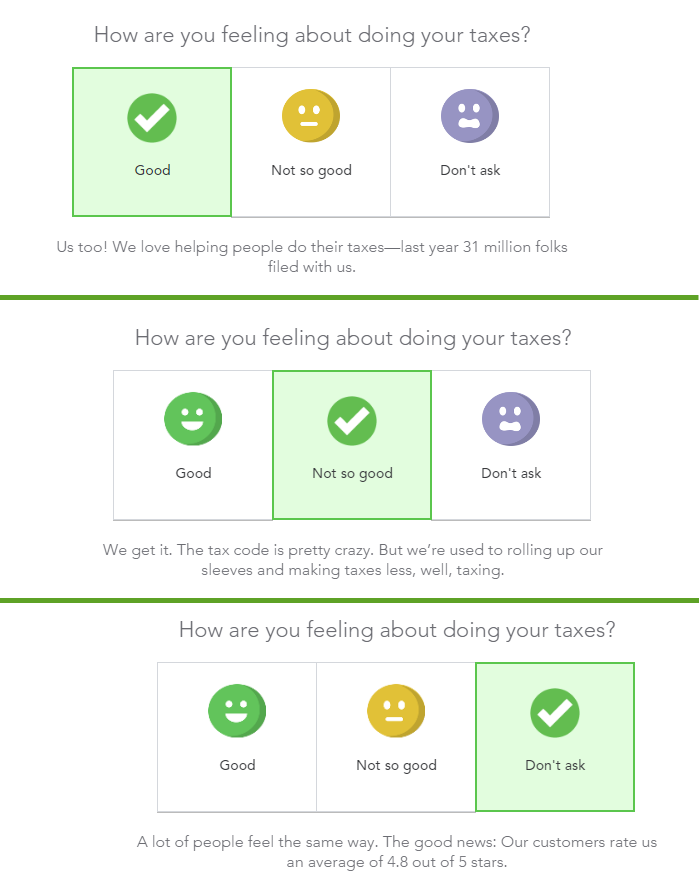Microcopy: Making a Big Emotional Impact with Small Content
Speaker: Andrew Roe, Principal Content Designer, Intuit
Presentation link: http://www.slideshare.net/JackMolisani/andrew-roe-microcopy
 “Diamonds are forever”, and other iconic advertising slogans, are powerful examples of the importance of effective microcopy. But microcopy (loosely defined as those small bits of text and/or graphics that help users do things in your app) is not just for advertising. It plays a significant role in making software friendly, approachable, and usable. Andrew Roe, Principal Content Designer at Intuit drove this point home during his LavaCon Las Vegas 2016 session, “Microcopy: Making a Big Emotional Impact with Small Content.”
“Diamonds are forever”, and other iconic advertising slogans, are powerful examples of the importance of effective microcopy. But microcopy (loosely defined as those small bits of text and/or graphics that help users do things in your app) is not just for advertising. It plays a significant role in making software friendly, approachable, and usable. Andrew Roe, Principal Content Designer at Intuit drove this point home during his LavaCon Las Vegas 2016 session, “Microcopy: Making a Big Emotional Impact with Small Content.”
Often, a software product is being used in tense and trying circumstances, and this is particularly true for those using tax preparation software like Intuit’s TurboTax product. Thus, the design team determined that the user should be guided by text and icons through even tiny interactions. For example, when users start TurboTax, a question appears: “How are you feeling about doing your taxes?” Three options are provided: Good, Not so good, Don’t ask. However the user answers, TurboTax offers a reassuring reply tailored to the user’s selection. In addition to the text, each option offers a corresponding icon.
Andrew made a key point about creating microcopy: it should facilitate scanning. Whether we like it or not, users increasingly do not read paragraphs. Thus the shorter and punchier the text can be, the more effective.
He gave an example of a restaurant menu which used adjectives like “handcrafted” and “triple-basted.” The use of such evocative terms increased sales by 27%, versus a traditional and more boring menu. Using the phrase “Request pricing” on a software page was considerably more effective than “Request quote”, likely because “pricing” sounds less nebulous. On Tumblr, choosing the URL for one’s blog can feel fraught, but adding the explanatory text, “You can change this at any time” increases blog creation rates. In general, if the microcopy helps the user feel that he or she has not made an irrevocable, high-stakes decision, the user is more likely to proceed.

I experimented myself with TurboTax, paying attention to the microcopy interactions. I found that microcopy anchored me in the process, reassuring me that I had made significant progress, and helping to focus my attention on one thing at a time. Because preparing taxes involves so many fiddly details, keeping the user focused on the task required for that specific question is important, and TurboTax handles that very well. When TurboTax asks for information, the microcopy explains why this information has been requested. A good human accountant would demonstrate this type of patience, and with the appropriate microcopy, the software can do the same.
Microcopy can be used to smooth over emotional and difficult interactions with the software. Andrew gave an example of how he had modified the microcopy that dealt with the tax issues involved with the death of a minor child during the tax year, so that the user’s personal loss was acknowledged. A user who had herself experienced the death of a child specifically tweeted that she had found this interaction humane and thoughtful.
Do some users find these types of textual nudges and acknowledgments overly familiar? I think that is possible. But the microcopy found in TurboTax has been written by content designers who are specifically thinking of their users when they write it. It’s a human-to-human experience, albeit modulated through the software interface.
Perhaps we will get to the point where software can accurately determine how much closeness and connection should be implied by the microcopy, and can customize it specifically for each user. Increasingly, software is moving in a personalized direction, and that may happen sooner than we think.